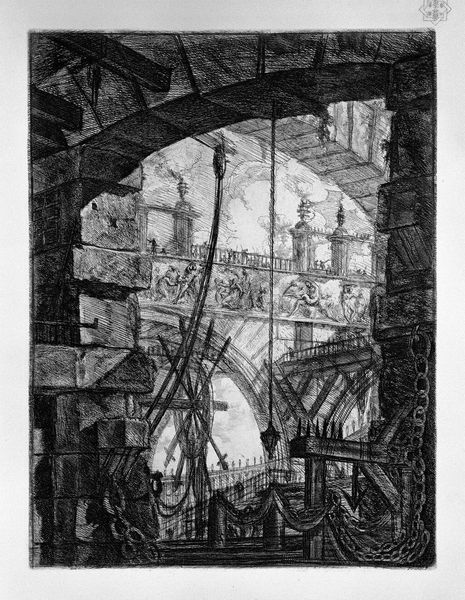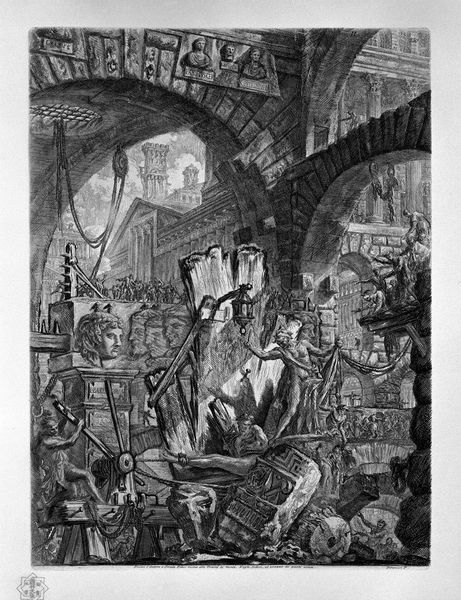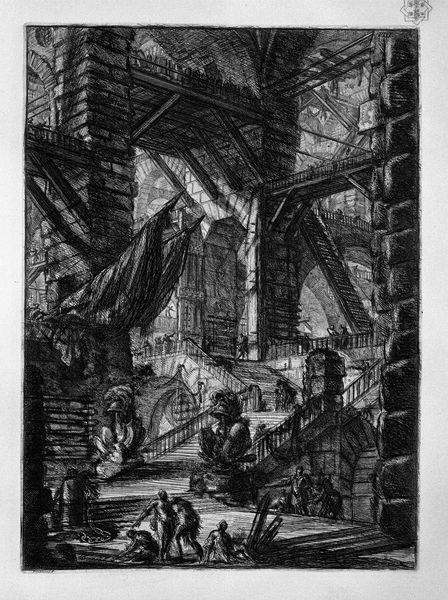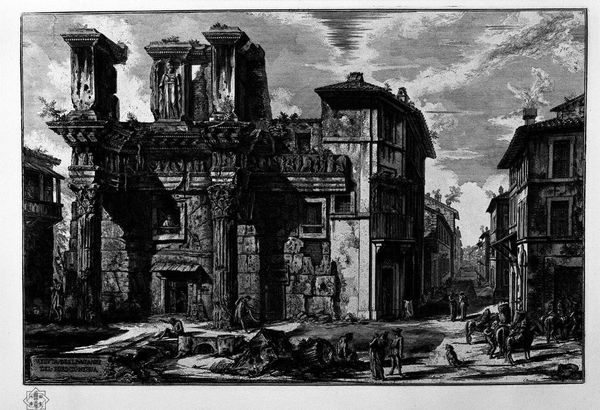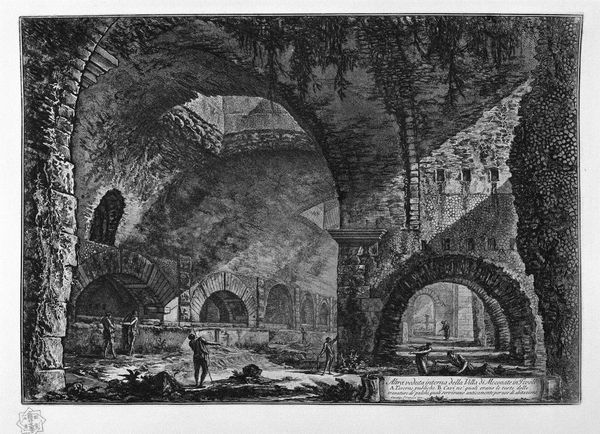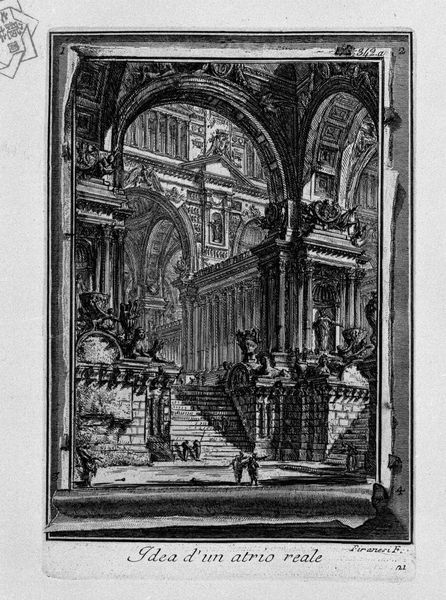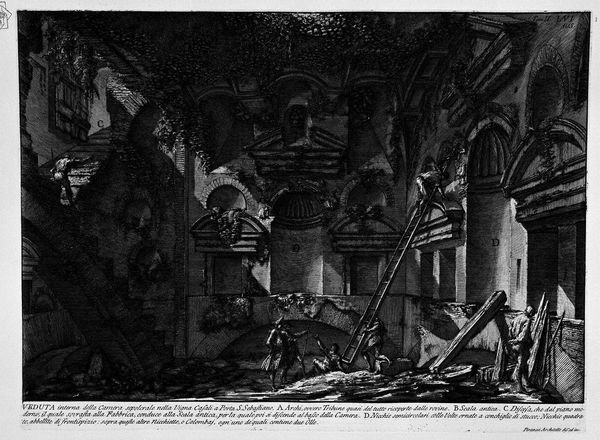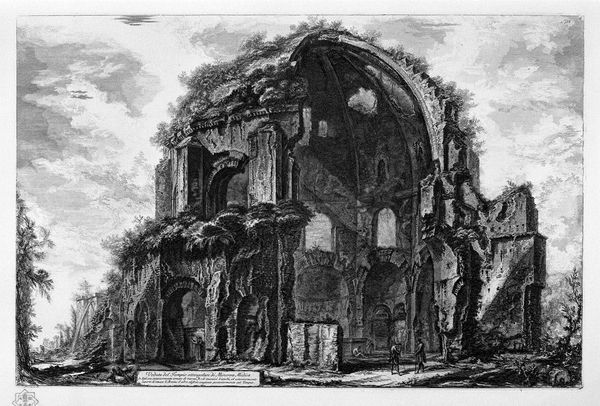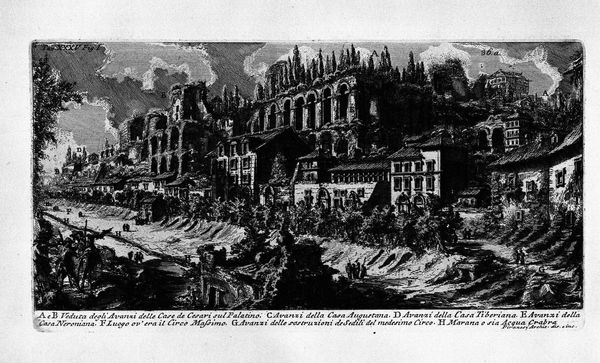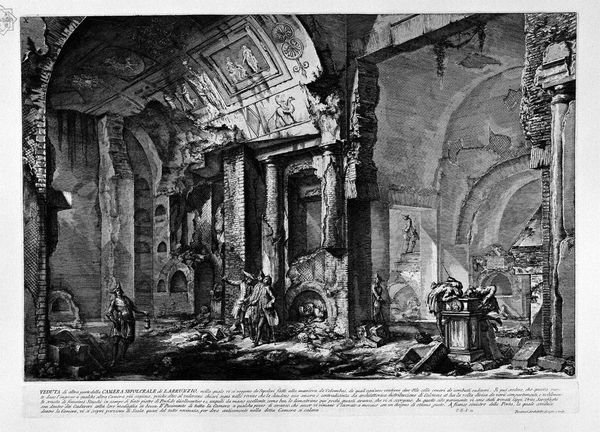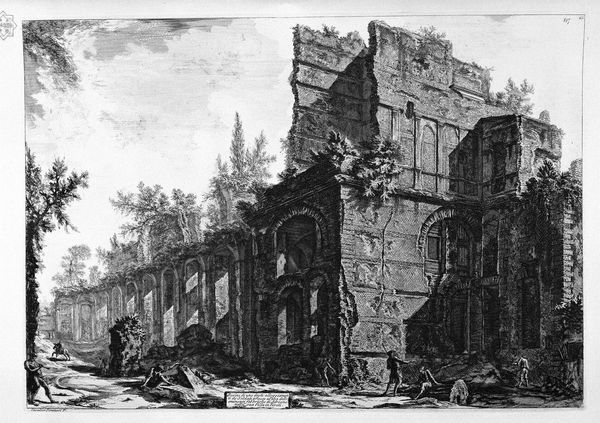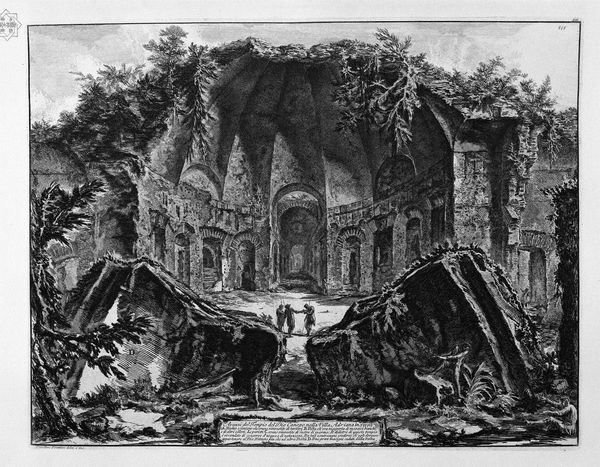
Burial chamber invented and designed in accordance with the custom and the ancient Roman emperors magnificence 1742
0:00
0:00
Copyright: Public domain
Curator: Let's explore this intricate etching by Giovanni Battista Piranesi, titled "Burial chamber invented and designed in accordance with the custom and the ancient Roman emperors magnificence", created in 1742. Editor: Wow, what a title! My first impression is the weight of history, of decay almost. The high contrast emphasizes the grandiose scale of this imagined space and, simultaneously, its ruinous state. I feel dwarfed looking at it. Curator: It’s Piranesi’s fascination with the physical reality of Rome's architectural heritage coming to the fore. Look at the cross-hatching – it speaks to the intense labor involved in both creating the actual structure and then rendering it on the printing plate. The etching process itself—the biting of acid on copper—echoes the slow, relentless erosion he depicts. Editor: Exactly! This goes beyond a simple representation. It evokes a potent social commentary on power and mortality. The grand Roman ideals juxtaposed against decay suggest the cyclical nature of empires, but also serves as commentary on the relationship between the colonizer and the colonized when we start questioning who gets to determine whose culture ends up in ruin. Who profits? Who has access? Curator: Absolutely, we can even think about who's consuming these images in the 18th century. The Grand Tourists acquiring Piranesi's prints become active participants in a system where labor, materiality, and even cultural narratives become commodified and consumed. Editor: And isn’t it interesting how the artist is constructing, or perhaps reconstructing, historical narratives through careful selection and arrangement of these elements? The Roman aesthetic is clearly dominant but he also includes, like you mentioned, his own labour by portraying workers amid the fallen statues. The figures invite the viewer into a story—but who is telling it, and for what purposes? Curator: Well said, Piranesi challenges us to think critically about history. To him, this wasn't a dead, ossified subject, but rather a raw material to be manipulated, re-envisioned, and used as a way of talking about his own world. Editor: This engraving prompts essential inquiries concerning heritage, decline, and how historical narratives impact contemporary dialogues on power and identity. I’m grateful to have explored it from your angle. Curator: And likewise – thank you for reminding us of the important connections between historical artifacts and present-day social dynamics.
Comments
No comments
Be the first to comment and join the conversation on the ultimate creative platform.
